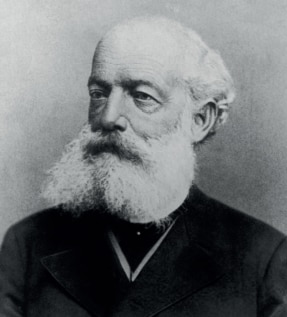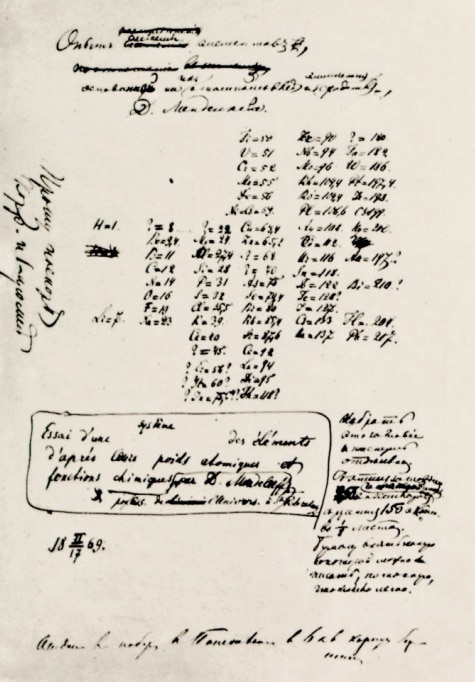Hamaad Muin Ahmad, Medical Student, Czech Republic
Rewind back to the dot-com bubble burst back in 2000 and you’ll see that since then, technological and scientific advancements have soared. The last two decades have witnessed an exponential ascent.
For example, tube televisions weighing 45kg just about managing 480p resolution have transformed into 8k flatscreen televisions jampacked with specs stuffed into a 20kg model. Mainstream cars are rapidly moving towards full electrical models. Three or four years ago, if I saw a Tesla parked on the street, it would be the highlight of my day. However now, not a day passes where I do not see one.
We said goodbye to Nokia brick phones long ago and now eagerly await the next new iPhone, which Apple constantly claims (and successfully so) is better than its previous model. Smartphones now have cameras more powerful and higher in resolution than some of the most expensive handheld video cameras 15-20 years ago.
Humanity’s advancements are now more than ever before, tremendously mirroring exponential growth.
For one who holds little to no faith in God, this might show evidence of the “greatness” and “glory” of the human race and nothing more.
On the other hand, one who has a resolute conviction in God and has studied history will consider this to be concrete evidence of His compelling existence. Not only this, it demonstrates God’s active role in humanity’s scientific discoveries. Below are a few anecdotes from the history of scientists who claimed to have been inspired by dreams or visions, thus leading to their Nobel-Prize-worthy breakthroughs.
In the books of history, we find stories of remarkable scientists such as Isaac Newton who observed the apple fall from the tree, inspiring his formulation of the theory of gravity. Some scientists claimed to have had dreams revealing to them information later contributing to the development of ground-breaking discoveries, such as the case of August Kekulé – the founder of the benzene ring structure.

Were these simply dreams or epiphanies, or was there a greater power behind it all?
Now, I gave in to the temptation of watching one of the latest Marvel additions: Eternals. In this movie, Phastos is an Eternal and uses his cosmic energy to progress Earth’s societal development. Evident from the name “Eternal”, he cannot die until he fulfils his mission on earth which was sent in 5000 BC. Phastos’ role is to guide and progress technological innovations throughout the course of human history by using his powers to “inspire” human scientific intellectual discovery. From the humble invention of the wheel to the destructive atomic bomb, Phastos and his powers played a role (in this movie).
Now, of course, this was a movie and completely fictional. But I pondered and thought that “I know of a Being who inspires His creation daily in real life and in real-time” – God. Furthermore, as a Muslim, I hold the resolute belief in the existence of God and not only His existence, but His active role in humanity’s development.
Anyhow, after watching the film, it took me back to my high school days when we were being taught organic chemistry. We were learning about the structure of the benzene ring – an organic chemical compound with 6 carbons and 6 hydrogens (C6H6) organised in a ring structure.
For decades since its discovery in 1825 by Michael Faraday, scientists were puzzled about the structure of benzene despite being heavily aware of its empirical formula of C6H6.
Due to the odd spatial organisation of its atoms, European scientists continued to scratch their heads desperately trying to understand the structure. They knew there was something odd about the benzene structure. They just didn’t know what.
Among these was one German chemist. Late at night in early 1862, deep in his textbook study, enveloped in grains of creosote residue from a 19th-century chimney fire, August Kekulé dozed off and had a dream. Kekulé recounted:
“I was sitting writing at my textbook; but the work did not progress; my thoughts were elsewhere. I turned my chair towards the fire and dozed off. Again the [carbon] atoms were gambolling before my eyes. My mental eye could now distinguish larger structures of manifold conformation: long rows, sometimes more closely fitted together; all twining and twisting in snakelike motion.
“But look! What was that? One of the snakes had seized hold of its own tail, and the form whirled mockingly before my eyes. As if by a flash of lightning I awoke; and this time I also spent the rest of the night in working out the consequences of the hypothesis.” (www.chemistryworld.com/features/snakes-sausages-and-structural-formulae/9038.article)
Kekulé claimed to have dreamt about a snake biting its own tail. He then linked this dream to the structure of the benzene ring and hypothesised that its structure is composed of alternating double and single carbon-carbon bonds. The next year he produced an extensive research paper in German on the subject. He turned out to be completely correct. The structure of benzene was confirmed decades later in 1929 by the crystallographer Kathleen Lonsdale using X-ray diffraction methods.
This scientific breakthrough was crucial for the future of chemistry and medicine. In 1988, it was reported by the American Chemical Society that two-thirds of all current chemicals contain a benzene ring. Furthermore, we have found out that benzene is also carcinogenic. Medicine, drugs and hormones such as epinephrine, norepinephrine and dopamine all contain a benzene ring in them.
In my humble opinion, I believe there is no other possible explanation for the above anecdote other than the active involvement of the Hand of God and God revealing hidden insight to Kekulé through a type of divine revelation.
Creating the periodic table – Mendeleev’s dream

Billions of students around the world have heard of the periodic table of elements. It is the tabular display of the chemical elements organised and based on various chemical properties. The organisation of the table aids scientists in analysing the reactivity of elements, predicting chemical reactions and through understanding these trends, speculating on properties yet to be discovered.
But the table was not always like this. There is a deep history engrained in it.
Originally, in the 18th and 19th centuries, some scientists suggested organising the table according to metals and non-metals. Others suggested arranging it based on atomic weight and grouping them into triads.
It wasn’t until 1869 that the famous Russian chemist, Dmitri Mendeleev created the framework that is the periodic table that we know today.
In 1869, humanity was only aware of 63 out of the 118 current known elements. Mendeleev became obsessed with these 63 elements. Inspired by the North American card game known as solitaire, he made a set of cards with each element written on one card and took them everywhere he went. On 17 February 1869, immediately after breakfast, and with a train to catch later that same morning, Mendeleev set to work organising the cards. He carried on for three days. Exhausted from his three-day effort, he fell into slumber and had a dream:
“I saw in a dream a table where all the elements fell into place as required. Awakening, I immediately wrote it down on a piece of paper.”(Mendeleyev’s Dream: The Quest For the Elements,Paul Strathern)
After his dream, Mendeleev drew the table he had dreamt. Whilst arranging these cards of atomic numbers, he discovered what is called the Periodic Law and the Periodic table. His discoveries were so substantial and ground-breaking that he even knew to leave spaces in the table for elements which were not known at the time, for example gallium, germanium and scandium.
From this, it is evident that when God reveals knowledge to His creation, the discoveries elucidate and perfectly mirror His perfect intelligence and knowledge which knows no bounds.
Google – ‘When a really great dream shows, grab it!’
More recently is the story of Larry Page – one of the co-founders of Google. When Larry Page was a 22-year-old graduate, in the 1990s and a student at Stanford, he had a dream. He narrated this dream during the 2009 University of Michigan commencement speech. He was struck in the middle of the night with a dream. In this dream, he had somehow managed to download the entire web and just keep the links of his downloads. Whilst narrating this dream, the Google co-founder said:
“When a really great dream shows up, grab it!”
At another place, he said:
“When I suddenly woke up, I was thinking: what if we could download the whole web, and just keep the links and […] I grabbed a pen and started writing! Sometimes it is important to wake up and stop dreaming. I spent the middle of that night scribbling out the details and convincing myself it would work,”
Perhaps the next time you habitually perform a Google search, a surge of thanks may resonate to God for showing this dream to Larry Page.
Addressing the Jamaat on Friday, 7 August 1931 in Shimla, India, Hazrat Mirza Bashiruddin Mahmud Ahmad, Khalifatul Masih IIra, whilst speaking about revelation, narrated the following:
“There are also secular prophets of scientific progress who do not, of course, receive revelation in the form of actual words, but do, in fact, receive hidden insights from God and then spread their new knowledge throughout the world. Edison used to say that he would sometimes just be sitting around and then suddenly the right idea for a new invention would strike him like lightning. Since such prophets are prophets of science, the revelations that flash into their minds are purely of a scientific or technological nature. An idea is put into their head and they make new discoveries every day and bring to light new forms of knowledge and astound the world with their amazing inventions.” (www.reviewofreligions.org/33663/four-spiritual-and-secular-ranks/)
Additionally, in an online meeting with Norway Khuddam on 27 March 2022, after being asked about divine revelation and how one could explain it to atheists or scientists, Hazrat Mirza Masroor Ahmad, Khalifatul Masih Vaa explained the following:
“There is also a non-prophet who reaches a standard in the worldly terms. Some things which scientists have invented are actually a result of them going through a state of revelation. They receive these [ideas] in the form of inspiration. They ponder, and Allah the Almighty guides them […] when one ponders and deliberates upon something, they may enter a state of revelation […]
“For example, Archimedes was once bathing, and couldn’t work out a problem, so as he continued to bathe in the bathroom, he at once received the thought that this problem can be solved in this manner. He started saying ‘Eureka, Eureka’ and jumped out of the bath whilst exclaiming that he had finally found the solution to the problem. The same applies to other scientists as well. We claim that when they ponder over a matter and concentrate on it, and it is of benefit then Allah the Almighty aids them and gives them the answer. This answer which Allah the Almighty grants is in fact revelation; a revelation for secular people […]
“Thus, these are all operating in parallel – the spiritual realm and the physical realm. On the one hand, Allah the Almighty grants understanding by way of revelation in the spiritual realm, but on the other, He grants understanding through revelation in the physical realm to those who invent new things.”
There are other examples throughout the course of the history of scientists who have received dreams or visions inspiring them to perform groundbreaking discoveries. Each example bears testimony to the greatness and grandeur of God’s compelling power and His ever-lasting knowledge. He intends for humanity to progress further and whilst doing so, for humans to praise Him for He is Omnipotent and Omniscient.

